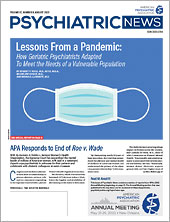Recent months have brought more anguish to this country. We have lost good and generous neighbors shopping for groceries in Buffalo. Teachers and young children celebrating the end of a school year in Uvalde, Texas, have been laid to rest. Again, we bear witness to the senseless, heartbreaking, infuriating impact of the tyranny of inaction. And as usual, the largest impact has fallen upon the communities, people, and children who have been systematically disinvested and disenfranchised.
For the first time, injuries related to firearms have become the leading cause of death among children in the United States, surpassing motor vehicle accidents, according to the May 19 New England Journal of Medicine. How is it possible that firearms deaths continue to rise while motor vehicle deaths continue to fall?
The answer seems straightforward. Motor vehicle safety has long been understood as a pragmatic issue of public health; through that framework, we have made enormous strides. Gun safety has been mired in politics and culture wars; through that entanglement, we reap continued heartache.
We need to reframe the dialogue. Preventing gun violence cannot continue to be a political issue, a cultural issue, or even a constitutional issue. It is a public health issue like smoking cessation, fire safety, seatbelts, and car seats. Gun violence lies directly within “our lane,” not because we are mental health professionals but because we are health professionals.
Like many of you, it nauseates us when gun violence is blamed on mental illness. We know greater resources are needed for mental health screening, treatment, and research—though gun violence is far from the leading reason these resources are badly needed. It is hard to imagine a psychologically balanced individual discharging a lethal weapon into an innocent victim—though people with diagnosed mental illness are far more likely to be victims of violence than perpetrators.
It sickens us when the narrative around mental health and gun violence focuses on a “deranged individual,” while other factors including unfettered legal access to firearms, racism, educational disinvestment, and poverty go unaddressed. It sickens us that those who lament mental illness as the primary culprit after mass shootings often fail to support legislation or spending on mental health. Moreover, as Sen. Chris Murphy of Connecticut cogently stated, “Spare me the BS about mental illness. … We don’t have any more mental illness than any other country in the world. … We’re an outlier when it comes to access to firearms and the ability of criminals and very sick people to get their arms on firearms. That’s what makes America different.”
To prevent future gun violence, people like ourselves and our professional societies must play an increasingly vocal role in the local and national dialogue—through education of patients, trainees, and clinicians; community outreach; and research to inform public policy.
Health care workers represent a broad range of cultural, political, and geographic perspectives and are trusted voices in society. Our duty is to advance the health and well-being of the communities we serve. Reducing gun violence through evidence-informed interventions and expert advocacy is surely integral to this mission. It is hard to conceive of goals less polarizing and more consistent with our purpose and values than preventing trauma and premature death. As Esther Choo, an emergency medicine physician in Oregon, wrote in a tweet reported by NPR, “We are not anti-gun. We are anti-bullet holes in our patients.”
In these times of sadness and trauma, we are encouraged to see the health care community increasingly embracing this issue as within our lane and our responsibility. To safeguard the well-being of communities across the United States, we must come together and lead, not as a monolithic political force but as diverse individuals who join forces on behalf of public health. ■
Resources
If you would like to explore further, here are a few illuminating articles on gun violence research and training:

